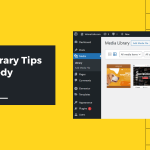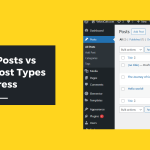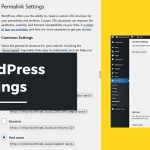Why Mobile Menus Matter More Than Ever
Let’s be honest, there’s nothing worse than launching a beautiful website only to find the navigation menu looks like a mess on mobile. It might disappear, overlap, or completely fall apart.
If you’re new to WordPress or building sites, this can be intimidating. But fear not, this guide walks you through every step of creating clean, mobile-ready menus that work for everyone , visitors, members, customers, and admins alike.
What Is a Navigation Menu and Why Does It Matter?
A navigation menu is a set of links on your site that guides users to different sections, like Home, About, Shop, Contact.
Think of it as your site’s GPS.
On mobile, where screen space is limited and attention spans are shorter, a menu that’s not responsive or intuitive will drive users away, fast.
A responsive menu:
- Keeps visitors engaged
- Boosts user experience
- Helps SEO rankings
Why Menus Break on Mobile
If your menu doesn’t work properly on smaller screens, it’s usually because of:
- Non-responsive themes
- Incorrect menu display assignment
- Poorly structured dropdowns
- Lack of mobile testing
We’ll fix all that, and even take it a step further by adding role-based and dynamic login/logout menus.
How to Create a WordPress Menu
- Log in to your WordPress dashboard
- Navigate to Appearance > Menus
- Click “Create a new menu”
- Give it a name (Main Menu, User Menu, etc.) and click Create Menu
- Add your items: pages, categories, posts, or custom links
- Drag and drop to reorder or nest submenus
Pro Tip: Use short, direct labels like “Contact” or “My Profile” to keep things mobile-frie
Assigning Menus to Display Locations
Scroll to the Menu Settings section and choose where the menu should appear:
- Primary Menu
- Header Menu
- Mobile Menu
- Footer Menu
Select the location that fits your design. If your theme has a dedicated mobile menu, assign it there for extra control.
Adding Dropdowns and Submenus
Want a dropdown menu under “Shop” or “My Account”?
Just:
- Add all items to the menu
- Drag the submenu items slightly to the right
- WordPress will nest them automatically
Always test these on mobile. Not all themes handle dropdowns well on touchscreens.
Introducing the Hamburger Menu
On mobile, your navigation is usually replaced with a hamburger icon, those three stacked lines (☰). Tapping it reveals a slide-in menu.
This is:
- Space-saving
- Familiar to users
- Cleaner visually
If it’s missing, your theme may not support mobile responsiveness. Plugins can help here.
How to Add Login, Logout, and User-Specific Links
Option 1: Use Built-in WordPress Links
- Login: https://yoursite.com/wp-login.php
- Logout: https://yoursite.com/wp-login.php?action=logout
But these show to all users and don’t provide a personalized experience.
Option 2: Use a Plugin
Install the User Menus – Nav Menu Visibility Control plugin.
It allows you to:
- Show/hide items based on login status or role
- Display custom links for admins, editors, subscribers
- Add dynamic content like “Hello, John”
Examples:
- Guest users see: Login, Register, About
- Logged-in subscribers see: Dashboard, Profile, Logout
- Admins see: Dashboard, Users, Settings, Logout
Previewing and Testing Menus on Mobile
- Go to Appearance > Customize
- Click the mobile preview icon
- Check:
- Does the menu become a hamburger?
- Are dropdowns easy to tap?
- Is anything broken, overlapping, or missing?
Fixes:
- Use shorter labels
- Remove excess items
- Hide desktop-only links from mobile
Best Plugins for Advanced Mobile Menus
If your theme’s menu options are limited, try these:
- Max Mega Menu — Mega menus, columns, animations
- Responsive Menu — Drag-and-drop mobile builder
- WP Mobile Menu — Off-canvas panels and icons
- Elementor Pro — Powerful custom nav menu widget
Fixing Common Mobile Menu Issues
Problem → Fix:
- Menu not showing → Check if it’s assigned to a location
- Dropdowns not working → Use tap-friendly plugins
- Items wrap or overflow → Shorten labels, reduce items
- Hamburger icon missing → Use a responsive theme/plugin
- Problem → Fix:
- Menu not showing → Check if it’s assigned to a location
- Dropdowns not working → Use tap-friendly plugins
- Items wrap or overflow → Shorten labels, reduce items
- Hamburger icon missing → Use a responsive theme/plugin
- Menu overlaps content → CSS z-index issue (use support or developer)
Should You Use a Sticky Menu?
Sticky menus stay fixed at the top while users scroll.
Pros:
- Always-visible navigation
- Good for long pages or eCommerce
Cons:
- Takes space on small screens
- Can block content if not styled well
Use sticky menus only when they improve usability.
Bonus Tips and Advanced Strategies
Embrace Mobile-First Design
Over 60% of your traffic is likely mobile. Start your menu layout from a phone screen before scaling up.
Use Mega Menus for Complex Navigation
Great for:
- News portals
- Online stores
- Membership sites
Use Max Mega Menu to add columns, icons, images, and widgets.
Accessibility Best Practices
- Use proper HTML elements (<nav>, <ul>, <li>)
- Ensure color contrast and readable fonts
- Add ARIA roles and labels
- Test with Lighthouse or screen readers like NVDA
eCommerce Mobile Menu Optimization
For WooCommerce or similar stores:
- Show product categories
- Include a visible cart icon
- Provide Login/Register links
- Add a search bar or filters
Consider a sticky bottom menu for quick actions.
Boost Performance
- Minify CSS/JS with Autoptimize or WP Rocket
- Use SVG icons instead of heavy fonts
- Lazy-load mega menu images
- Avoid slow JavaScript-heavy plugins
Build Custom Menus with Elementor
- Open Elementor > Theme Builder > Header
- Add a Nav Menu widget
- Set mobile layout to Dropdown or Full Screen
- Add icons, dividers, or conditional visibility
Use Off-Canvas Slide-In Menus
Plugins like WP Mobile Menu let you create slide-in panels from left/right with:
- Custom logo
- Menu items
- Social icons
- Login links
Great for mobile UX and user engagement.
Add Icons to Menu Items
Use the Menu Icons plugin to show:
- 🛒 Cart
- 👤 Login
- 🔍 Search
- ☎️ Contact
Make sure icons match your site’s tone and style.
Multilingual Menus
If your site is multilingual:
- Use WPML or TranslatePress
- Create language-specific menus
- Show a language switcher in the mobile menu
Test on Real Devices
Don’t rely only on your browser:
- Use Chrome DevTools (mobile view)
- Try Responsively App
- Use BrowserStack for real-world tests
Check tap accuracy, responsiveness, load time, and layout integrity.
Final Thoughts
A mobile menu isn’t just a convenience, it’s often the main way users explore your site.
With the right tools and techniques, you can create a navigation experience that:
- Works on every screen
- Shows the right options to the right users
- Loads quickly and looks professional
- Requires no code at all (unless you want to dive deeper)
Take 30 minutes to optimize your mobile menu, and watch user engagement, time-on-site, and conversions go up.
Further Reads
7 Best Practices for Designing Mobile Navigation
How to Add a Navigation Menu in WordPress
best mobile navigation practices for WordPress how to fix menu display issues on mobile mobile menu WordPress tutorial mobile navigation menu responsive navigation WordPress
Last modified: June 27, 2025











